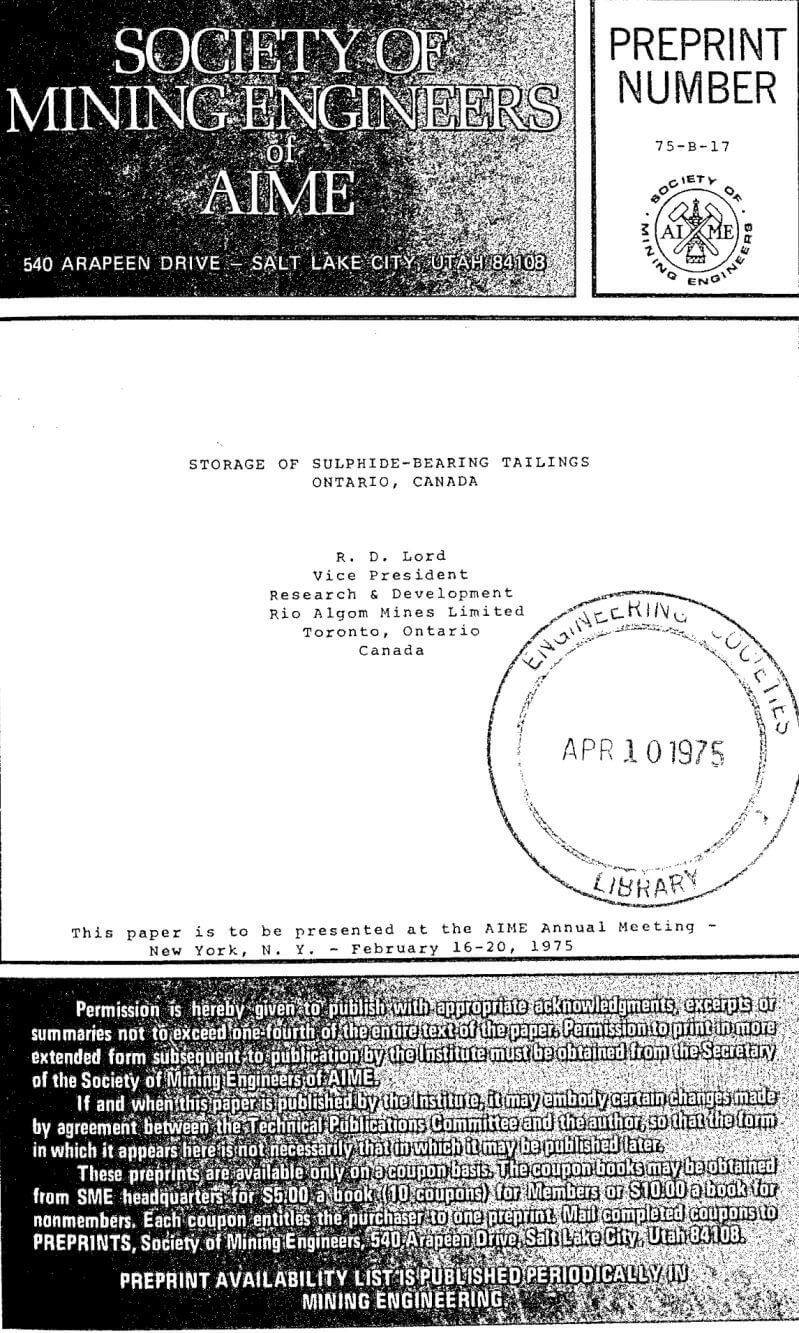The problem is typified in the tailings of the uranium operations of Elliot Lake, Ontario, where mining started some 20 years ago. The approach to tailings disposal paralleled the practice for other hydrometallurgical plants treating gold and base metal ores. Impoundment areas were designed to retain solids, and a clear and neutral overflow was considered satisfactory practice.
Now experience has shown that these areas, some idle for over a dozen years, release acids, in seepage and overflows, to an unacceptable degree. To protect natural water courses neutralizing plants are operated wherever required. Lime slurry is fed continuously into the tailings outflows in a quantity sufficient to raise the pH to 8.5 and precipitate heavy metals that may be in solution.
With the outstanding environmental problem being the oxidation of pyrite by bacterial action, the problem is to contain the products, or arrest the process. Given the ambient temperature, favourable half of the time, four items are essential to the activity.
- Pyrite
- Moisture pH < 4. 5
- Oxygen
- Bacteria
On existing impoundment areas, where the embankments are several thousand yards in length, it is believed that any program of injecting sealants can have small chance of success. However, a moisture barrier is an indicated specification for future construction, and this can be highly expensive.
Several obvious benefits would result from a good growth of grass or other vegetation on abandoned tailings. While restoring the natural green of the tract the growth would prevent windblown dust and reduce erosion. Sub-surface oxidation should be reduced, as well as the upward movement-of ground moisture as occurs in dry weather.
Drill core sampling of tailings that have lain undisturbed for several years showed oxidation to be restricted to within two feet of the surface. The depth is less where slime content is high, an indication that oxygen diffusion is a limiting factor. From this, considering the low solubility of air in water, we might expect that a continuous water cover might provide an effective oxygen barrier.
Pyrite removal is now being considered, more probably for the latter years of an operation, to provide a relatively inert blanket over the tailings deposit. To pursue this course for many years would pose a secondary problem – the secure storage of a large quantity of pyrite. Only a portion of it could be burned to make sulphuric acid (a possible alternative) due to the limited local requirements.
